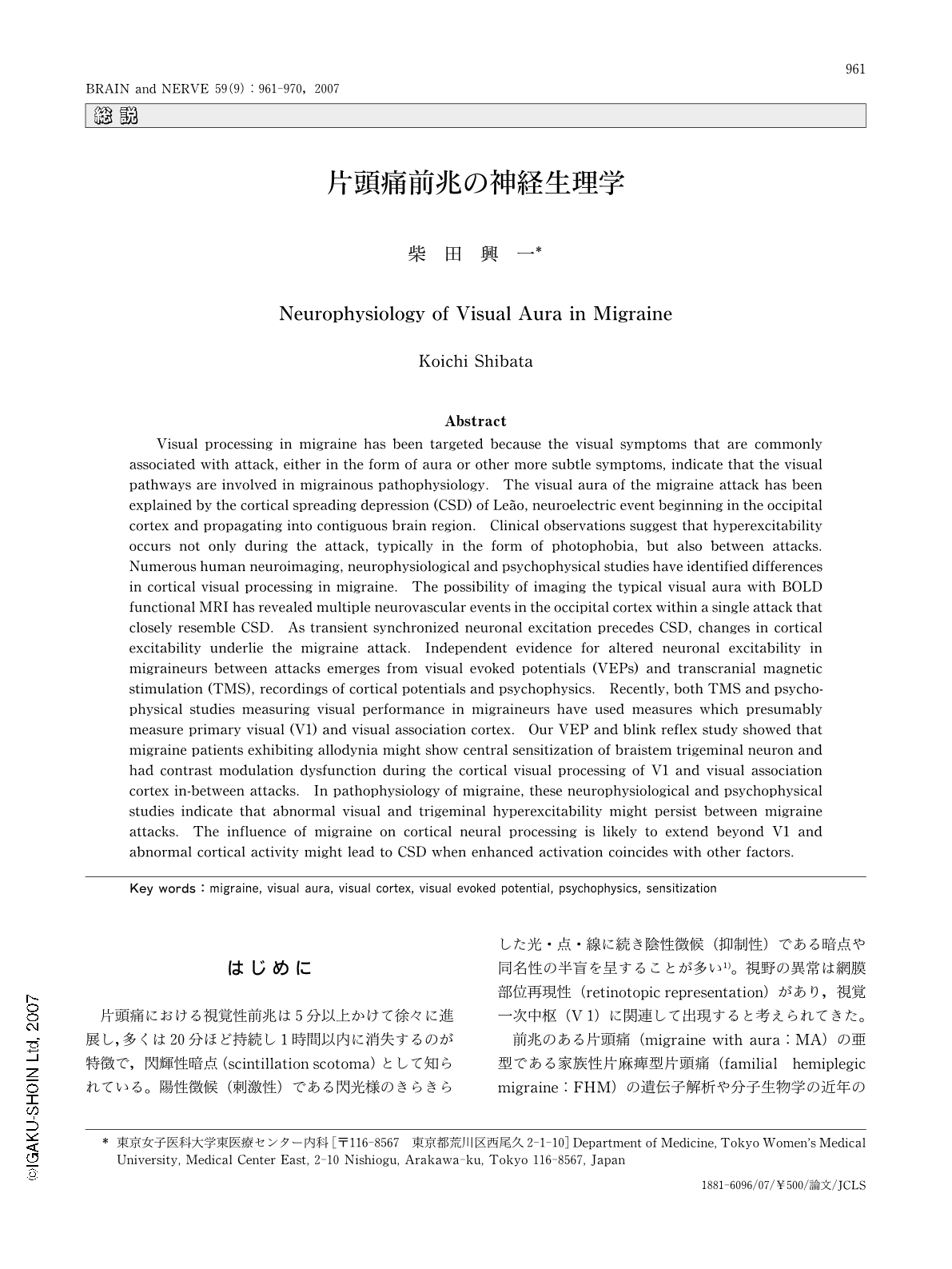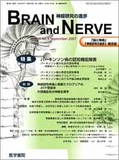Japanese
English
- 有料閲覧
- Abstract 文献概要
- 1ページ目 Look Inside
- 参考文献 Reference
はじめに
片頭痛における視覚性前兆は5分以上かけて徐々に進展し,多くは20分ほど持続し1時間以内に消失するのが特徴で,閃輝性暗点(scintillation scotoma)として知られている。陽性徴候(刺激性)である閃光様のきらきらした光・点・線に続き陰性徴候(抑制性)である暗点や同名性の半盲を呈することが多い1)。視野の異常は網膜部位再現性(retinotopic representation)があり,視覚一次中枢(V1)に関連して出現すると考えられてきた。
前兆のある片頭痛(migraine with aura:MA)の亜型である家族性片麻痺型片頭痛(familial hemiplegic migraine:FHM)の遺伝子解析や分子生物学の近年の研究成果にはめざましいものがある。一方,視覚性前兆を自覚するものは約20%で典型的な症状は必ずしも多くはないが,片頭痛の病態を考えるうえで視覚に関連するアプローチは重要である。本稿では,皮質拡延性抑制(cortical spreading depression:CSD)と最近の視覚性前兆に関連する研究について概説する。そのなかで特に神経生理に関連した発作間欠期の心理物理学的な研究を紹介し,片頭痛の発症機序について簡単に触れてみたい。
Abstract
Visual processing in migraine has been targeted because the visual symptoms that are commonly associated with attack, either in the form of aura or other more subtle symptoms, indicate that the visual pathways are involved in migrainous pathophysiology. The visual aura of the migraine attack has been explained by the cortical spreading depression (CSD) of Leao, neuroelectric event beginning in the occipital cortex and propagating into contiguous brain region. Clinical observations suggest that hyperexcitability occurs not only during the attack, typically in the form of photophobia, but also between attacks. Numerous human neuroimaging, neurophysiological and psychophysical studies have identified differences in cortical visual processing in migraine. The possibility of imaging the typical visual aura with BOLD functional MRI has revealed multiple neurovascular events in the occipital cortex within a single attack that closely resemble CSD. As transient synchronized neuronal excitation precedes CSD, changes in cortical excitability underlie the migraine attack. Independent evidence for altered neuronal excitability in migraineurs between attacks emerges from visual evoked potentials (VEPs) and transcranial magnetic stimulation (TMS), recordings of cortical potentials and psychophysics. Recently, both TMS and psychophysical studies measuring visual performance in migraineurs have used measures which presumably measure primary visual (V1) and visual association cortex. Our VEP and blink reflex study showed that migraine patients exhibiting allodynia might show central sensitization of braistem trigeminal neuron and had contrast modulation dysfunction during the cortical visual processing of V1 and visual association cortex in-between attacks. In pathophysiology of migraine, these neurophysiological and psychophysical studies indicate that abnormal visual and trigeminal hyperexcitability might persist between migraine attacks. The influence of migraine on cortical neural processing is likely to extend beyond V1 and abnormal cortical activity might lead to CSD when enhanced activation coincides with other factors.

Copyright © 2007, Igaku-Shoin Ltd. All rights reserved.


